Natural slate is considered one of the UK’s oldest roofing materials, having been quarried here for centuries. Natural Welsh, English and Scottish slate sits firmly on top all kinds of historic British buildings and houses, still in pristine condition today due to its outstanding durability.
Here at UK Slate, we are proud to stock many durable yet stylish slates that are quarried right here in the UK. Here’s a look at some of the UK produced slates that we can provide for an array of exterior and interior design applications.

Welsh Slate is generally regarded as the finest slate in the world, with many exports falling short of its stunning appearance and long-lasting performance.
Incorporate the history of Wales into your home with this stunning Welsh Dark Blue Grey Slate.
This slate is quarried from the Cwt-y-Bugail quarry which dates production back to 1840. This doesn’t seem old for Wales considering the origin of its slate industry dates back to early Roman times!
This slate is available in a wide range of size and thickness options to suit all types of roof design. The thicker grades are progressively more rugged and suit projects where character and definition of the edge detail are desired.
If you’re inspired by the natural beauty and history of Welsh slate, then Welsh Heather Blue Slate is a great option.
Sourced from Penrhyn Quarry in North Wales, which dates back to the thirteenth century, this slate is very rare due to its unique heather blue, or purple colour. This fantastic slate has therefore been used by architects and designers globally to make beautiful and unique roofs.
Penrhyn Quarry has been in major operation for over 400 years, exporting to the known world since shipping began.
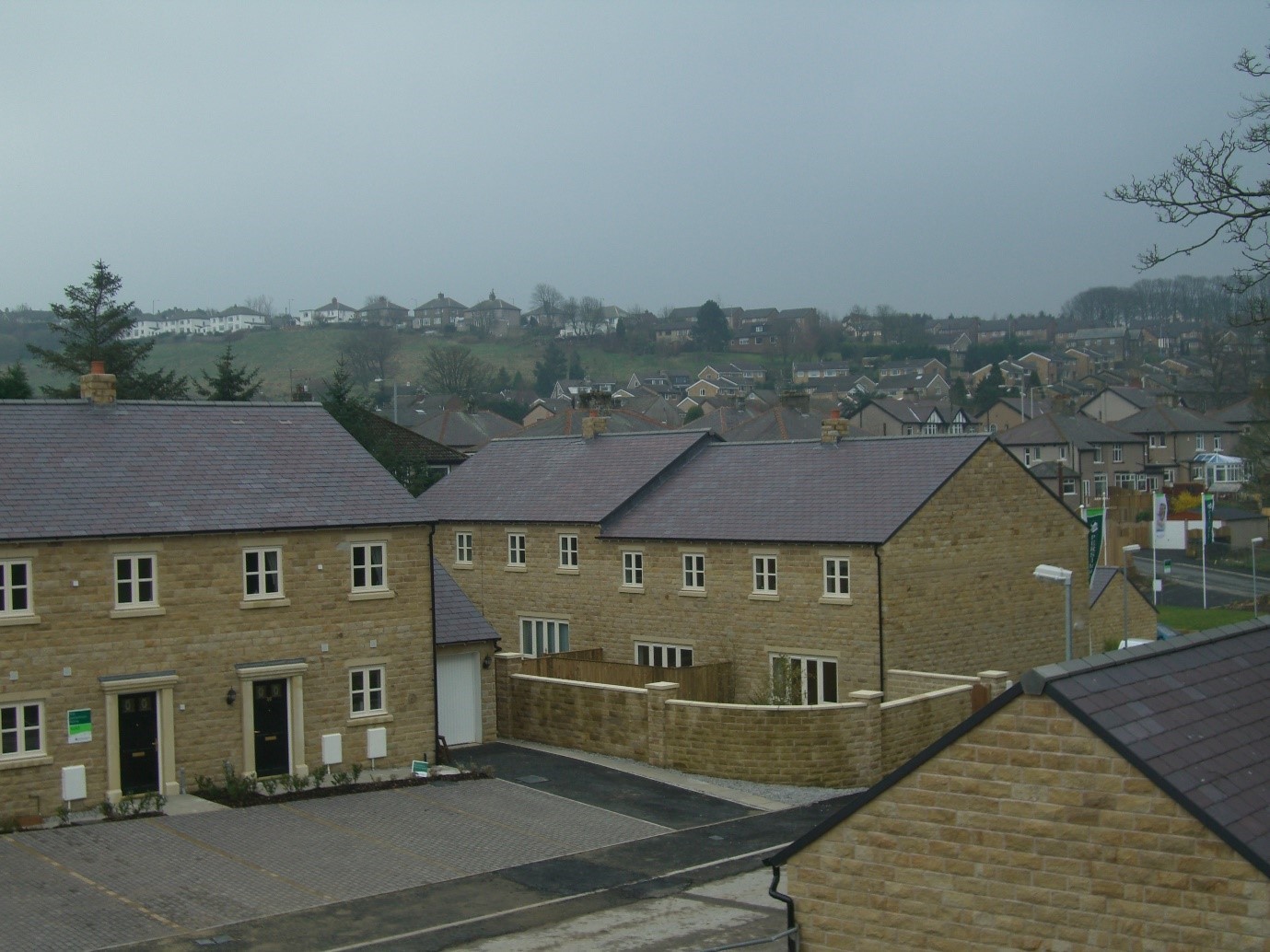
Sadly, slate quarrying in Scotland ceased in 1955, after the final closure of Ballachulish slate quarries. Yet, with over 200 Scottish quarries producing a vast range of slate colours and forms from the 18th century until the early 20th century, quarrying remains a big part of Scottish history. Many of these quarries have now become tourist attraction sites.
Scottish slate was renowned for its beauty and traditional look, and so many European quarries now produce look-alike alternative slates.
Here are a number of slates we stock to help you emulate that classic Scottish slate.

Named after the Ballachulish slate quarries of Scotland, Balach Grey is a medium textured dark blue grey slate.
Producers of this slate, from the Valdeorras region of North West Spain, quarry Balach Grey slate specifically for Scotland, where the general preference is for a thicker and more rugged tiles.
Cumbria is known for its slate, and during the last 500 years, much slate extraction has taken place in the Lake District at surface quarries and underground mines.
Westmoreland Green slate has been quarried for over 400 years to create stunning, weathertight roof coverings. This slate provides an exquisite finish to any property; it’s a quintessentially British slate known for its high quality and performance.
The distinctive green colour was created from the metamorphosed volcanic ash of the Borrowdale Volcanic group of mountains found in the heart of the Lake District. The chloride in the deposits gives this slate its beautiful colour.
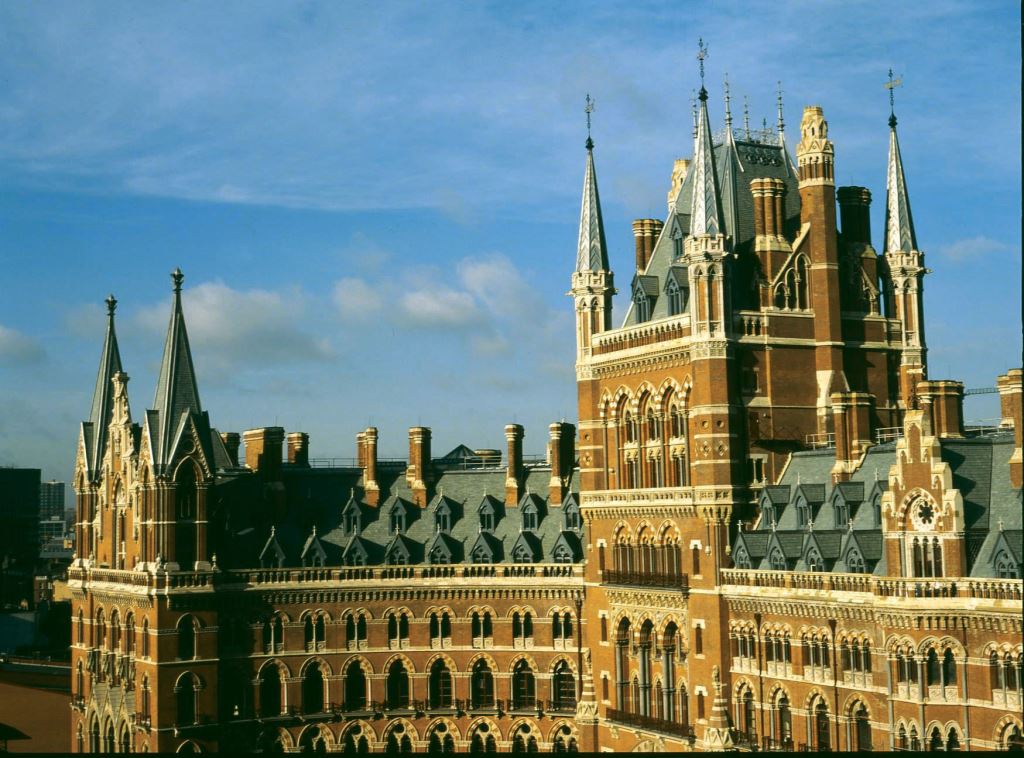
Burlington Blue Grey slate has been quarried in the Lake District for more than 300 years from slate deposits that were formed over 330 million years ago. The quarry is still owned and run by the original Cavendish family that established the company in 1843. At UK Slate, we are incredibly proud to stock this high-quality slate from our UK distribution depots.
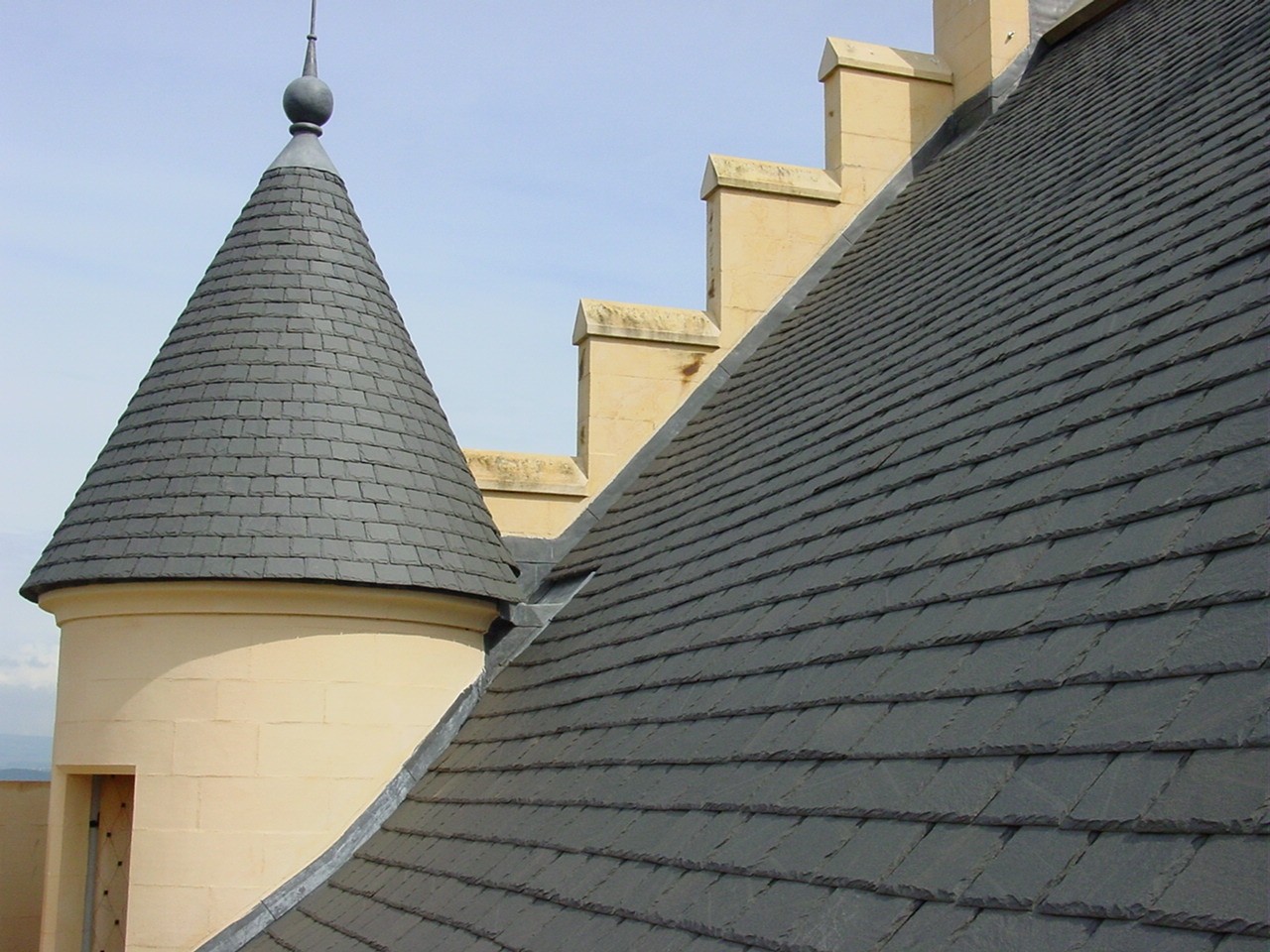
The roof is one of the most crucial and yet vulnerable parts of the home. It may not be something you think about very often or pay much attention to, but a well maintained, looked after roof is crucial to having a leak-free home. Here in the UK with our torrential weather for most of the year, no UK household can afford to skimp on quality roof maintenance and repair.
A good roof shouldn’t cause problems and should last for a very long time, but it’s paramount that you stay vigilant for any signs of problems. The sooner you can get a roof problem sorted, the less damage it will cause. Here are some of the ways your roof could be letting you know there’s a problem.
Water damage can often be mistaken for damp, but make no mistake, if you’re getting ceiling stains the cause is likely a leaky roof. Even the smallest watermarks could mean that water is seeping in from your roof, usually due to a hole or crack.
Water can do some real damage to your roof; even a tiny leak could lead to big problems such as mould, rotting, damaged ceilings and even roofing collapses. If you spy any water damage in your home and you suspect the roof to be the cause, getting it sorted as soon as possible will help prevent more catastrophic damage.
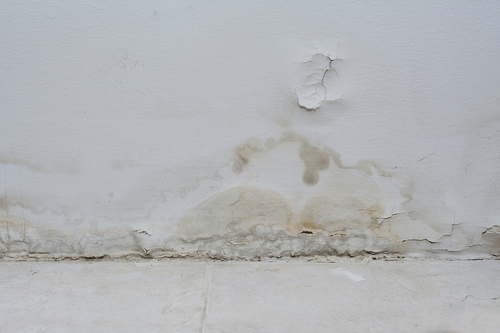
Aside from the mould that water damage can cause inside the home, mould and moss on the roof’s exterior can cause big problems. Roof tiles can be forced apart by moss, creating a gap that allows rainwater to seep in, which in turn will lead to water damage. Whole slates can also be broken apart as a result of freeze-fore weathering during winter as moisture can penetrate the slate via plant root systems before freezing. If you allow mould and moss to fester, it’ll create more problems down the line. Nip it in the bud early; you can use a chemical treatment to take care of moss, or if you’re planning a roof replacement, consider materials that are algae resistant.
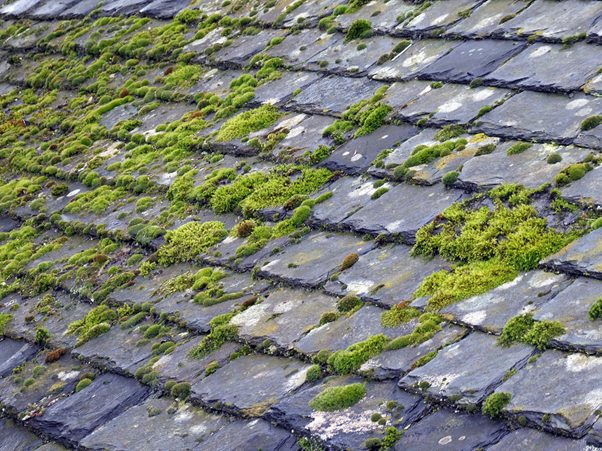
When you check your roof for damage, examine whether you have any loose or damaged, or even missing, roof tiles. These are typically a result of wind damage, but fortunately they can usually be easily replaced with a Hall Hook Slate Repair Fixing. This is best done quickly, as missing roof tiles expose the house to defects that can lead to massive deterioration of the entire roof.
However, if most of your roof tiles are looking worn and worse for wear, why not consider an entire roof replacement? At UK Slate, we can provide you with high-quality sourced roofing slate from the finest quarries around the globe.

If the water damage hasn’t made it down yet into the central part of the house, that doesn’t necessarily mean there isn’t a problem. The attic should be the first place you check, as any leaks in the attic such as circular stains on the walls can be a sign that water is getting in. Attic leaks are often caused by missing tiles, broken seals or even condensation build up. Make sure you address these problems as soon as you notice them. It’s worth doing an annual roof check which includes going into the attic and inspecting the walls for any moisture. A good quality breathable membrane should always be used under slates to allow damp air to ventilate through the roof before costly damage is caused.
While gutters are known to catch leaves, twigs and other kinds of nature’s debris that often needs to be cleaned away, clogged gutters could also be a sign of a deteriorating roof. If you notice sand, sludge-like granules or even rust in the gutters, it could be a sign that your roof covering is deteriorating. A few loose granules are normal as your roof naturally ages, but if there is an increase in this residue, it could be a sign that the tiles are deteriorating faster than they should.
Perhaps the most significant warning sign of a severe problem, a droopy roof is an indication of a structural integrity problem with the house. The sagging could be caused by frequent exposure to moisture, faulty roofing materials during building, improper installation or in locations that experience frequent bouts of snow and ice. If your roof appears to be sagging, have this look at by a professional immediately, or it could lead to a roof collapse.
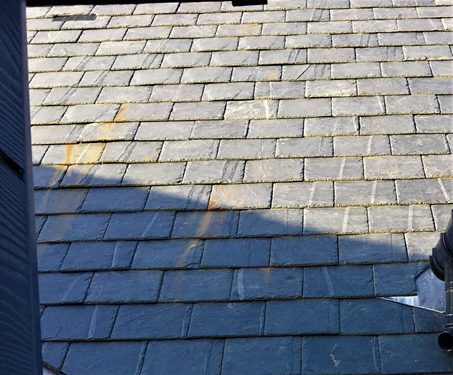
Perhaps not something you may have considered, but if you’ve noticed a spike in your energy bills, it could be because you’ve had to start cranking the heating up higher than usual to keep warm. A roof can seriously contribute to maintaining a toasty temperature with its insulation properties. So a colder home could be the result of a faulty roof or ventilation problems causing the temperature to drop.
At UK Slate, we can provide you with a fantastic range of slate roof tiles to give your roof a brand-new lease on life. Contact us today for more information.
When installing a roof, the wide variety of materials to choose from can be overwhelming. Knowing which kind of tiles are best to invest in for a beautiful and durable roof is essential. Slate roofing tiles are one of the most high-quality and long-lasting roofing tiles around, yet durability is just one of the many benefits a slate roof may bring to your project. Here’s a look at some of the reasons slate makes a great choice for roofing tiles:
When properly maintained, slate roofs can last for decades, even centuries. Naturally strong, and absorbing little water, slate roofs are less susceptible to leaking and frost damage than other, less durable materials.
Here at UK Slate, we supply only those slates which attain the A1, T1 and S1 BSEN standards for water absorption, carbon content, and thermal cycling. Our Estillo 29 slate, for example, tested just 0.29% for water absorption. This means that when you buy from UK Slate, you can be confident that your roof will stand strong whatever the weather.
From time to time, prolonged extreme weather and general old age can leave a building looking tired and neglected. But once the slate tiles have been carefully removed and tidied up, they can often be re-laid to provide a home with decades more protection from the elements.

Here at UK Slate, we believe you shouldn’t have to choose between beauty and durability. As well as being hard-wearing, slate tiles have a beautiful, classic, rustic look, undiminished by time or the elements.
When using slate, you have plenty of options to customise your roof in both size and colour. Not all slates are grey, they actually come in a range of colours, from the gentle green of our Elterdale, to the deep purples of Welsh Heather Blue. There is plenty to choose from when roofing with slate. Whether you wish to blend in with the colour tradition of your local area or make a statement with a more striking hue, slate tiles are the ideal material to achieve the desired aesthetic and provide an elegant finish to your project.
With a long-established pedigree as a roofing material, slate tiles remain the go-to for more traditional builds such as vintage homes, and historical restorations. Yet much of the beauty of working with slate comes in its versatility, as slate tiles can achieve stunning results atop more modern, innovative projects. The limit truly is your imagination.
But the colour of the slate is not the only factor to consider when choosing your slate. For centuries, slates have been cut into a variety of shapes for more decorative and prestigious markets.

Slate is very resistant to fire, able to withstand higher temperatures than many metals can. It’s great for enduring severe temperature changes, which is why it makes an ideal choice for the likes of roofs and floors. It’s why it also makes a great choice for the kitchen, due to its resistance to heat and burning. Slate slabs that are designed to be used as counter tops in kitchens are chosen for their ability to withstand the level of heat it may come across in typical kitchen conditions.
Slate forms naturally when layers of rock are exposed to extreme pressure and heat, so it’s no surprise that it’s so resistant to fire. This natural property makes slate a great choice for roofing material as it reduces the chances of a building’s roof catching alight in the event of a fire.

Waste from roofing is a substantial part of the total waste sent to landfills each year. Asphalt shingle roofing, for example, needs replacing every couple of decades. Waste is reduced substantially by choosing slate, due to its greater life-span. Choosing slate is a sustainable solution to ever-more prevalent environmental concerns, allowing you to rest-assured that your roof, while meeting your needs, does not do so at the expense of the environment.
Here at UK Slate, supplying quality natural slate roofing and excellent customer service to every client is our priority. If you require high-quality tiles for your roof, and want to know how we can help you, you can contact us on 015395 59289 to speak with our highly-skilled team and they will happily answer any query you may have.
At UK Slate, we strive to not only meet our customers’ expectations, but exceed them. We pride ourselves on being able to source and provide some of the very best natural stones both domestically and from across the world.
Today, we’re putting the spotlight on our range of Indian Limestones. Limestone is a wonderful material that can be used in almost any space. It is made naturally from sediments that have been compacted by heat and pressure to form rock. As a result, a range of colours are available, influenced by the sediment laid down millions of years ago. Here’s a look at our range of Indian Limestones:
The Kirkhead Grey Limestone is a light to medium grey toned limestone. The shades are reminiscent of the local grey limescale of the southern Lake District, perfect for anyone trying to recreate that look. The textured surface is combined with hand-cut worn edges to give an imperfect-looking, yet beautiful floor. The worn antiqued finish blends seamlessly when laid next to existing limestone flags, having the appearance of a floor gradually polished by decades of use. The random sizes create a stunningly traditional stone floor look.
This stone is also available in a Natural Antiqued finish. The rougher surface can provide higher grip in areas of heavy foot traffic like a hallway.
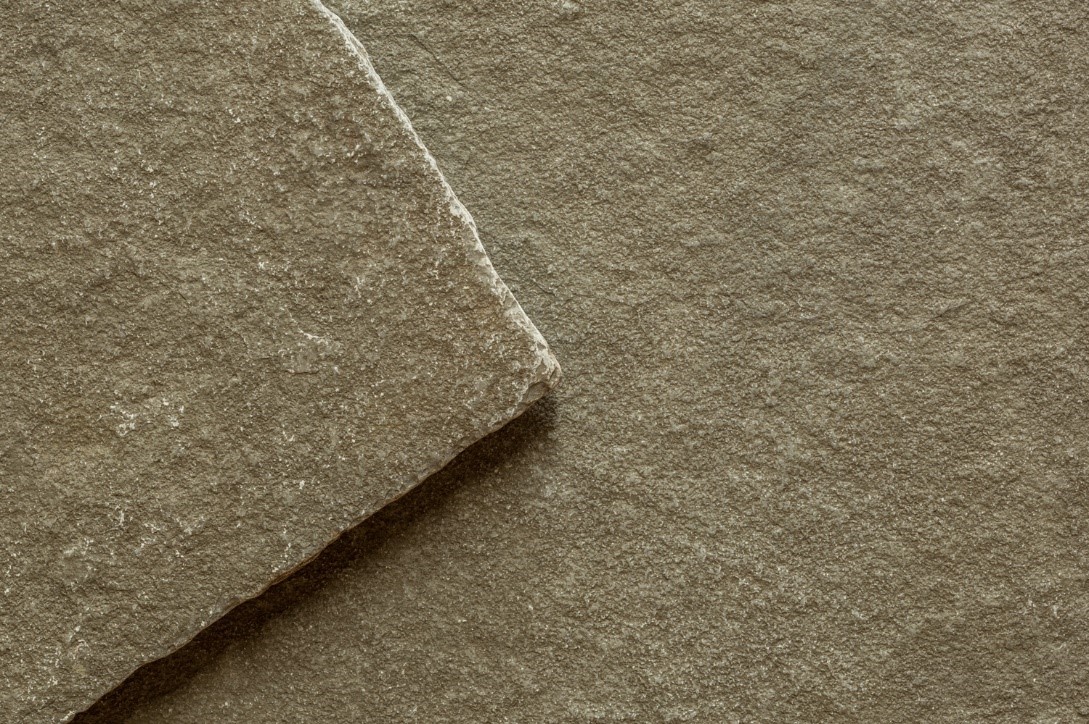
The Harrington Grey Chapel Smooth Aged Limestone varies from mid grey to brown and contains small amounts of darker hues. The smooth finish gives a soft appearance reminiscent of a sawn limestone floor that has been polished down by footsteps over many eras, creating a timeless, worn appearance.
The Harrington Grey is also available in a Cathedral Antiqued finish. Like the Smooth Aged Limestone, the Antiqued finish has the textured appearance of a stone that has been naturally worn down over time to give a depleted appearance. With a small amount of tumbling to the edge of the flags you can achieve a narrow grout joint.

At UK Slate, all our limestones are ethically sourced from reliable quarries in India. The control and supervision is carried out by IGEP India in corporation with the Rugmark Foundation India. Child labour, social standards and the payment of at least minimum wages are controlled. It’s just our way of showing that we care about the products we sell, and that you can be assured you’re getting materials that have been ethically sourced.
With so many limestone tiles to choose from, our range of Indian Limestones is the perfect choice for all your flooring needs. If you’re looking for roofing, flooring or landscaping, UK Slate are here to help. For more information on our products and services, don’t hesitate to contact us today.
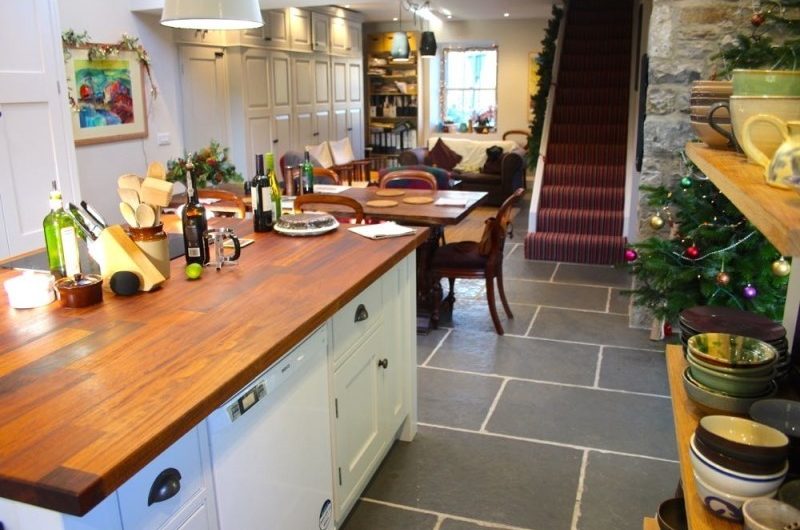
Slate is found in Wales and the North-West of England. More specifically, you will find the majority of UK slate mines in the Lake District, Cumbria.
Cumbria
The slate industry is worldwide, with 90% of Europe’s natural slate used for roofing originating in Spain. The US also possesses important producing regions, with the state of New York being home to The Slate Valley area, being one of the places in the world where coloured slate (which is not grey or blue) is obtained.
Today, however, we’re putting the spotlight on the slate industry closer to home, here in the UK. Major slate mining regions exist in areas of the UK. Let’s take a closer look at these quarries and what kinds of slate are mined here.

The Welsh slate industry has an extensive history. It began in the Roman period, when slate was used to roof the fort at Segontium, now Caernarfon. The first large-scale slate mining in North Wales began with the opening of Penrhyn Quarry in 1782 (back then known as Cae Braich y Cafn quarry). However, the first reference to slate extraction from Penrhyn is from back in 1570, when it was mentioned in a Welsh poem.
In the 19th century, along with Dinorwic Quarry, Penrhyn Quarry dominated the Welsh slate industry. They were the world’s largest quarries. The main pit of Penrhyn Quarry is nearly one mile long and 370 metres deep, it was worked by nearly 3,000 quarrymen. It still remains Britain’s largest slate quarry today, but its workforce is now nearer 200, and was superseded in size by slate quarries in China, Spain and the US.
At UK Slate, we stock slate from Penrhyn Quarry, including:
Welsh Heather Blue – This beautiful slate comes in heather blue or purple, and its striking colour is incredibly rare in the industry.
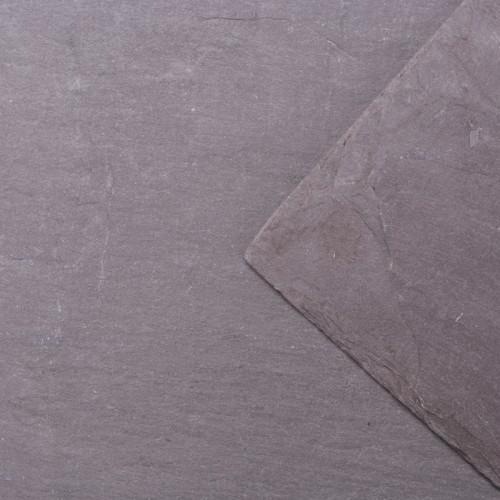

Cwt y Bugail Quarry is located above Ffestiniog in North Wales. It first worked as a trial pit around 1840 and produces dark blue grey slate. Today it is an open cast quarry, whereas slate was originally mined in deep caverns and pillars. In fact, during World War II the quarry was used to store art treasures from the National Gallery and the Tate Gallery for safe keeping.
At UK Slate, we stock this stunning dark blue grey slate:
Welsh Dark Blue Grey – This slate is used by architects worldwide, it is renowned for its stunning looks, reliability and ease to work with and is regarded as one of the finest slates in the world.

Parts of Cumbria have significant history with the slate industry, dating back 400 years. The industry exploded in the 18th and 19th century in response to the demand for slate roofing as a result of the industrial revolution, and the growth of towns in Northern England.
Today the slate industry in Cumbria is just a fraction of what it was, but it is still active at Kirkby, Broughton Moor, Elterwater, Tilberthwaite Valley and Honister Slate Mine.
At UK Slate, we stock slate mined in Cumbria, including:
Westmorland Green – Quarried for over 400 years, this slate provides an exquisite finish to a home. It is quintessentially British with its distinctive green colour which is created from the metamorphosed volcanic ash of the Borrowdale Volcanic group of mountains in the heart of the Lake District.

The UK truly is a wonderful source of beautiful slates for all sorts of applications. From Cumbrian slate to Welsh slate, Brazilian slate to Spanish slate, we stock a vast range of different kinds of slate to suit your needs. Contact us today for more information about any of our slate roof tiles.
There are many different types of slate with varying colours including:
These various naturally occurring colours are a result of slate composition and the location where the slate is found.
Slate is a type of rock that has many natural occurring colour variations. Natural slate is a fine-grained metamorphic rock composed of sedimentary or volcanic ash deposits which, through metamorphism, have been chemically and structurally changed. Due to slate’s defined lines of breakability – cleavage and grain – it is possible to split slate into thin sheets, and this makes them ideal for turning them into materials such as roof slates.
The minerals inside slate is what determines its colour. In slates that appear green, this is due to chlorite – a group of common sheet silicate minerals that form during the early stages of metamorphism. They most often form in rock environments where minerals are altered by heat, pressure and chemical activity. When chlorite is present in sufficiently high concentration, it gives slate a green colour.
At UK Slate, we have a range of beautiful green slate available for a wide range of applications:
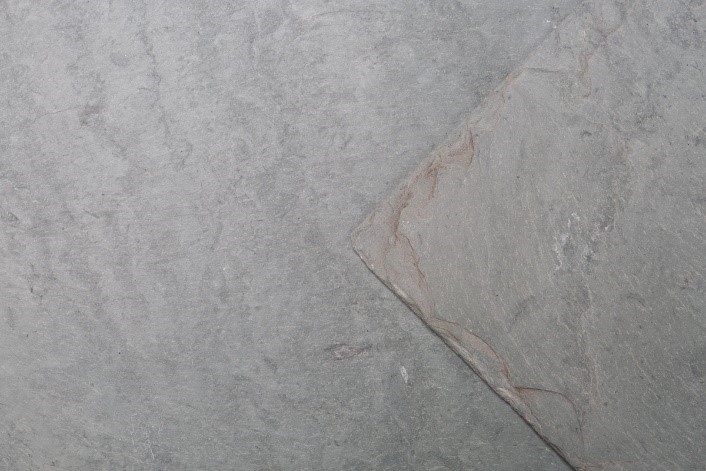
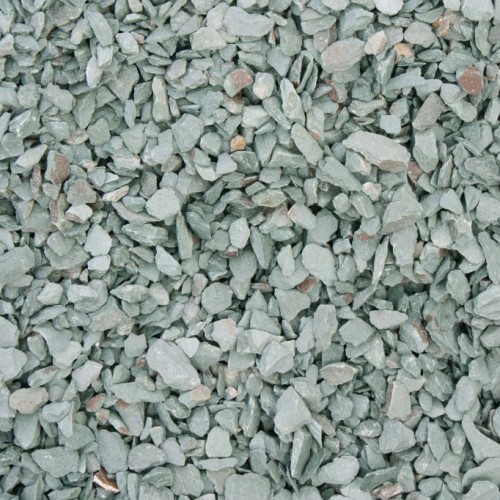
These Lakeland Green Decorative slate chippings are ideal for an extensive range of domestic landscaping projects and commercial developments. Quarried in the heart of the Lake District, this slate is a stunning pale green with tones of grey running through; it makes the perfect backdrop for plant or garden features.
Blue slate is a kind of aqueous sedimentary rock, it tends to be crossed over with grey to give a blue-grey tone. Its main mineral composition is calcium carbonate.
At UK Slate, we have a range of blue slates available:
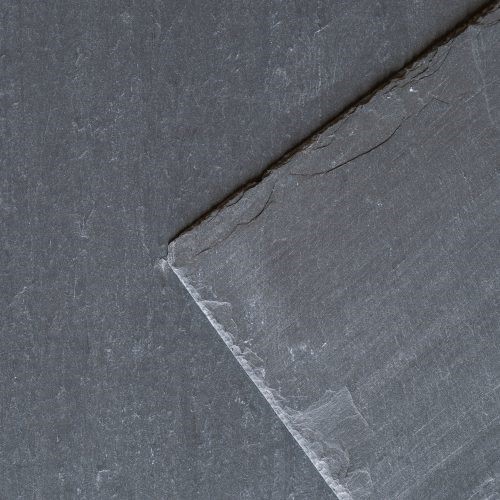
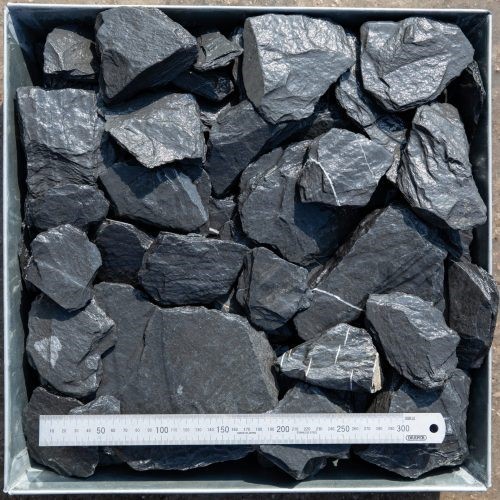
Purple slate is beautiful in colour and is caused by haematite. Haematite is an oxide of iron found in slates formed from deposits laid down in oxidising conditions. It is the most durable form of iron and not affected by exposure. Haematite is not visible to the naked eye but can be recognised by its purple colour.
At UK Slate, we have a range of purple slates available:


Here at UK Slate, we strive to meet and exceed the needs and expectations of our customers. We have years of experience in the slate industry and working with roof slate as well as sourcing the very best slate, both domestically and from around the globe. If you have any questions about any of our services, please to do hesitate to contact us, and we would be happy to answer any of your questions.
 Internal Sales Executive
Internal Sales ExecutiveUK Slate is a Local company, based in Flookburgh near Grange over Sands, successfully trading Nationally and Internationally with exciting plans for continued growth and also expansion via diversification into related product markets and routes to our customers.
We specialize in supplying an extremely large and diverse range of natural slate and stone products to an established and expanding customer base. Predominantly Roofing slate from UK and foreign quarries, but also Flooring, Cladding, Landscaping and Bespoke Manufactured items. In very basic terms – virtually anything that can be made from slate or stone – we stock or supply.
This isn’t as daunting as it sounds, as on the job training is part of every completely varied working day. Finding the person with the right natural qualities is vitally important to us rather than what you already know about products or the industry. But it would be a bonus……..
We are looking for an outgoing, organised and proven Internal Sales Executive to join our highly talented and motivated compact team. The position can be extremely rewarding and involves dealing with enquiries through the whole of the supply process from initial enquiry, through product advice and price negotiation, to arranging despatch. Our customer base is continually growing, mainly through our hard-earned reputation around the globe, ranging from international contractors to national and local trade customers, architects and private individuals.
With experience, this key role can offer career progression to encompass all parts of the business including procurement, international logistics, finance and management.
Some, but not all, of the qualities which we are looking for are:
What we can offer to the successful applicant, depending on experience and performance is:
If you think that this Internal Sales Executive opportunity is for you – please forward a current CV along with any other information that you think relevant to info@slate.uk.com
Vermont Slate is one of the most highly regarded products world-wide. Within the slate world, this is at the top of the ladder. It has been used in the USA and the UK for centuries on many projects- from prestigious buildings to simple cottages – and is utilised by all sorts of people, from designers to builders. Details of projects in the UK date back all the way to the 1890s where the slate is still on the roof today, doing what it was made to do: protect the building.
Not only can Vermont slate protect your building and do so for years and years, it can be a mesmerising style statement. UK slate what exactly makes this slate so special? And can it enhance your building’s exterior? UK Slate investigates!
When it comes to home design, your roof can be the difference between a clean and modern aesthetic and a finish which lacks attention to detail. The versatility of Vermont slate means it can fit within any design approach. For a more contemporary approach to your project, consider the Eureka Vein roof tiles accompanied with a modern polymer render, and more glass entrances around your property. This is sure to ooze a modern, clean, and elegant air. An open brick aesthetic can also work well for a unique approach to an up-to-date design.
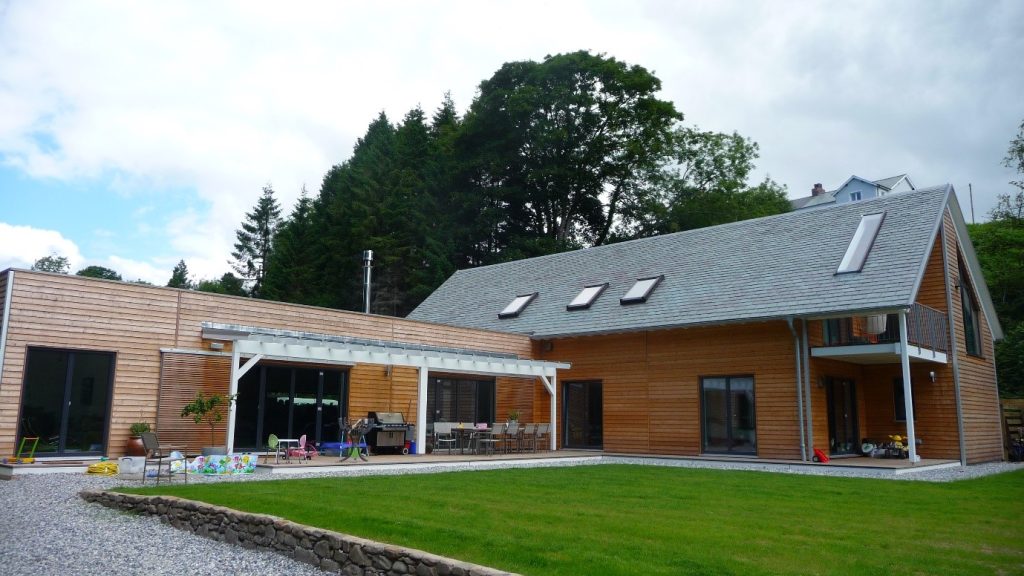
Vermont Green slate has been used many times within specific English Heritage projects including several National Parks and Crown Estates, and it’s not hard to see why! The simple yet elegant aesthetic presents a classic look which produces the perfect combination of a chic, ‘chateau’ feel whilst maintaining a remarkable fuss-free exterior.
If you are looking for a design which reflects a true classic and timeless style, then Vermont Slate can help. Its back-story and origin also gives you the perfect slice of history, right there on your roof!

Many interior designers, builders and even homeowners are designing and constructing houses now with the future in mind, and this comes to design too. With trends coming and going, keeping a slate style which will never go out of style and will last for a considerable amount of time is vital.
By utilising Vermont slate into your design, you can not only create a long-lasting and withstanding structure, but you can also ensure a lavish and sustainably styled visual.

Here at UK Slate our Vermont range is totally unique, and when compared to other tile and slate specialists, our methods of extraction are completely distinctive. The majority of our competitors tend to source their stock of Vermont Slate from more corporate companies. This loses the traceability factor, as repeatedly their slate will be obtained from several varying quarries and mixed in the production process.
We differentiate from our competitors here as when we procure our Vermont Slate, the slate extracted is from a single family-owned (and run) quarry. The raw block is cut in the production sheds on site to ensure that the slates are made ‘on the grain’ which not only improves the strength of the slate, but also the longevity and workability of the finished product. This is when we supply it to our fantastic customers.
We are the only exclusive Vermont Structural Slate merchants in the UK and the only suppliers of the unique Mottled Vermont Slate too! Get in touch with our team today to find out more about our Vermont Slate ant other slate roof tiles – our friendly team are more than happy to assist.
Adhesives and grout are essential products within the tiling industry, and here at UK Slate, we are providers of both. Each different adhesive has a specific use depending on what is required for the project.
We thought we would help you choose the right product for the right job by detailing the uses of each, helping you with your future tiling projects.

An adhesive is a substance used for sticking objects or materials together. Within the tiling industry, adhesives are used to adhere the tile to the relevant surface. What type of adhesive is required is dependent on the surface you’re tiling onto.
Grout is a substance used for filling crevices, most commonly gaps between wall or floor tiles. There are two types of grout:

At UK Slate, we have a range of adhesive and grout products to help you choose the perfect product for your project. Here, we will go through which products are used for different uses.
Here at UK Slate, our specialist adhesives and grouts are tailored for natural slate and stone flooring. If you would like to know more about our products and services, get in touch with us today by calling 015395 59289 or emailing info@slate.uk.com and we will be happy to help.